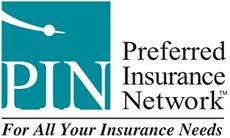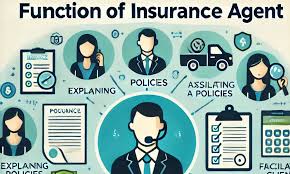When you’re involved in an accident, the moments afterward can feel overwhelming. Ensuring everyone’s safety and exchanging information are crucial initial steps. But what comes next? What should you be mindful of as a policyholder navigating the aftermath of a collision? Understanding the process can help you protect yourself and your interests. So, what’s the next vital piece of information you need to know to navigate this challenging situation successfully?
Key Takeaways
- Ensure safety: Move to a safe area, check for injuries, and turn on hazard lights.
- Exchange information: Share contact details, insurance information, and vehicle specifics with the other driver.
- Document the scene: Take photos, record details, and gather witness information for insurance purposes.
- Contact insurance: Notify your insurance company promptly with all relevant accident details.
- Seek medical attention: Prioritize health, document injuries, and keep medical records for insurance claims.
Safety First
When you find yourself in the aftermath of an accident, the priority is always your safety. Take a deep breath and assess the situation. If your vehicle is in a dangerous location, try to move to a safe area if possible. Turn on your hazard lights to alert other drivers of the accident.
Check yourself and any passengers for injuries. If anyone is hurt, call emergency services immediately. Even if there are no visible injuries, it’s essential to seek medical attention to rule out any internal injuries.
Once you’ve ensured everyone’s safety, it’s crucial to gather information for insurance purposes. Exchange contact and insurance details with the other party involved in the accident.
Take photos of the scene, including any damages to vehicles and any relevant road signs or signals. If there are any witnesses, collect their contact information as well.
Exchange Information
To ensure a smooth post-accident process, exchanging information with the other party is essential. This step is crucial in facilitating insurance claims and determining liability.
Here’s what you need to do:
- Exchange Contact Information: Share names, phone numbers, and addresses with the other driver. This information will be necessary for insurance purposes and any legal proceedings that may follow.
- Get Insurance Details: Obtain the insurance company name and policy number of the other party. This information is vital for filing a claim and ensuring coverage for any damages.
- Note the Vehicle Information: Make a note of the make, model, color, and license plate number of the other vehicle involved. This information can help in identifying the vehicle if there are discrepancies later on.
Document the Scene
After exchanging information with the other party involved in the accident, the next critical step is to document the scene accurately.
Take photos and videos of the vehicles involved, the surrounding area, any visible damages, road conditions, and traffic signs. Make sure to capture various angles to provide a comprehensive view of the accident scene.
Additionally, jot down important details such as the date, time, weather conditions, and any other relevant factors that may have contributed to the accident.
It’s also crucial to gather contact information from witnesses who saw the accident occur. Their statements may provide valuable insight into what transpired and help corroborate your account of the events.
Be sure to write down their names, phone numbers, and any other pertinent details they’re willing to share.
Accurately documenting the scene of the accident can significantly support your insurance claim and any legal proceedings that may follow.
Contact Your Insurance Company
Notify your insurance company as soon as possible after an accident. It’s crucial to inform them promptly to begin the claims process and receive guidance on the next steps to take.
When contacting your insurance company, remember to provide them with all the necessary details about the accident, including when and where it occurred, the extent of damages, and any injuries sustained.
Here are some key points to keep in mind when reaching out to your insurer:
- Be Prepared: Have your policy number and any relevant documents handy before calling your insurance company.
- Stay Calm: While it can be a stressful situation, it’s important to remain calm and provide accurate information to your insurer.
- Ask Questions: Don’t hesitate to ask your insurance company any questions you may have about the claims process or coverage options.
Seek Medical Attention
Following an accident, prioritizing your wellbeing includes promptly seeking medical attention. Even if you feel fine initially, some injuries may not be immediately apparent. It’s crucial to get checked out by a healthcare professional to rule out any underlying issues.
Delaying medical treatment could worsen your condition, so don’t wait to seek help.
When you visit a doctor or a hospital, make sure to provide them with a detailed account of the accident and any symptoms you’re experiencing. This information will help them make an accurate diagnosis and provide you with the appropriate treatment.
Additionally, keep a record of all medical documents, bills, and receipts related to your treatment. These will be valuable when filing a claim with your insurance company.
File a Claim
Seeking medical attention after an accident is pivotal, ensuring your health and well-being remain a top priority.
Once you have taken care of your physical well-being, the next crucial step is to file a claim with your insurance company.
Here are some key actions to take when filing a claim:
- Gather all necessary information related to the accident, including photos, witness statements, and police reports.
- Contact your insurance provider promptly to report the incident and initiate the claims process.
- Be honest and thorough when providing details about the accident to your insurance company to ensure a smooth claims process.
Conclusion
In conclusion, remember to prioritize safety, gather information, document the scene, contact your insurance company, seek medical attention, and file a claim promptly after an accident. By following these steps, you can ensure a smoother process for handling the aftermath of a car accident and getting the support you need. Stay proactive and communicate effectively with your insurer to resolve the situation efficiently.

